Nature's Nursery, Nature's Pantry, and Nature's Air Conditioners: Trees
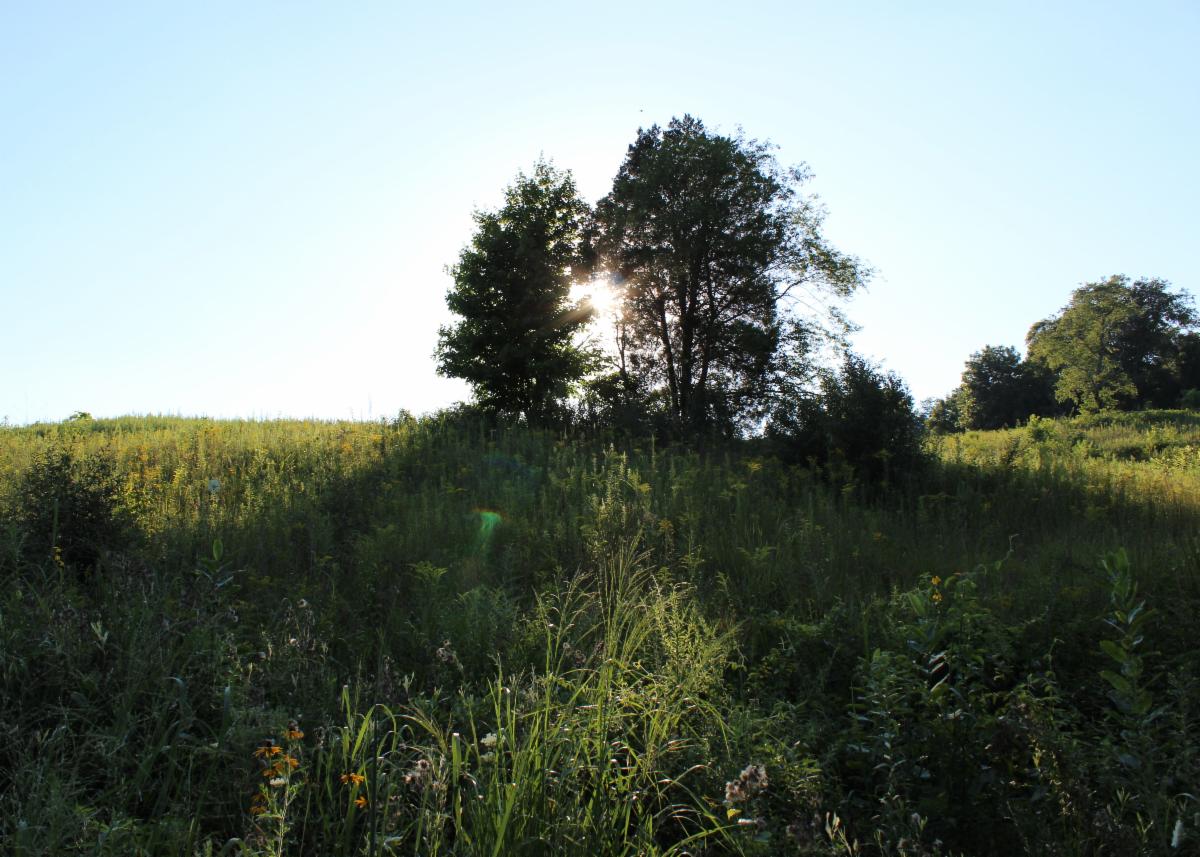
To state the entirely obvious: trees are beautiful. But they're also a crucial part of the ecosystem, provide habitat and food for wildlife, and help mitigate our warming summers.
Despite their beauty and importance to the environment, for many people, trees seem like a big commitment in a landscape. Between space concerns (if you have a small yard), 'trash' concerns (having to pick up sticks or detritus before mowing), and structural concerns (many people worry about large trees growing near their house), trees are, in modern landscaping practices, seemingly out of fashion. This spells trouble for the truly countless numbers of native creatures that rely on trees for food and habitat, and it's also somewhat self-defeating during our increasingly hot summers.
Just How Important Are Trees?
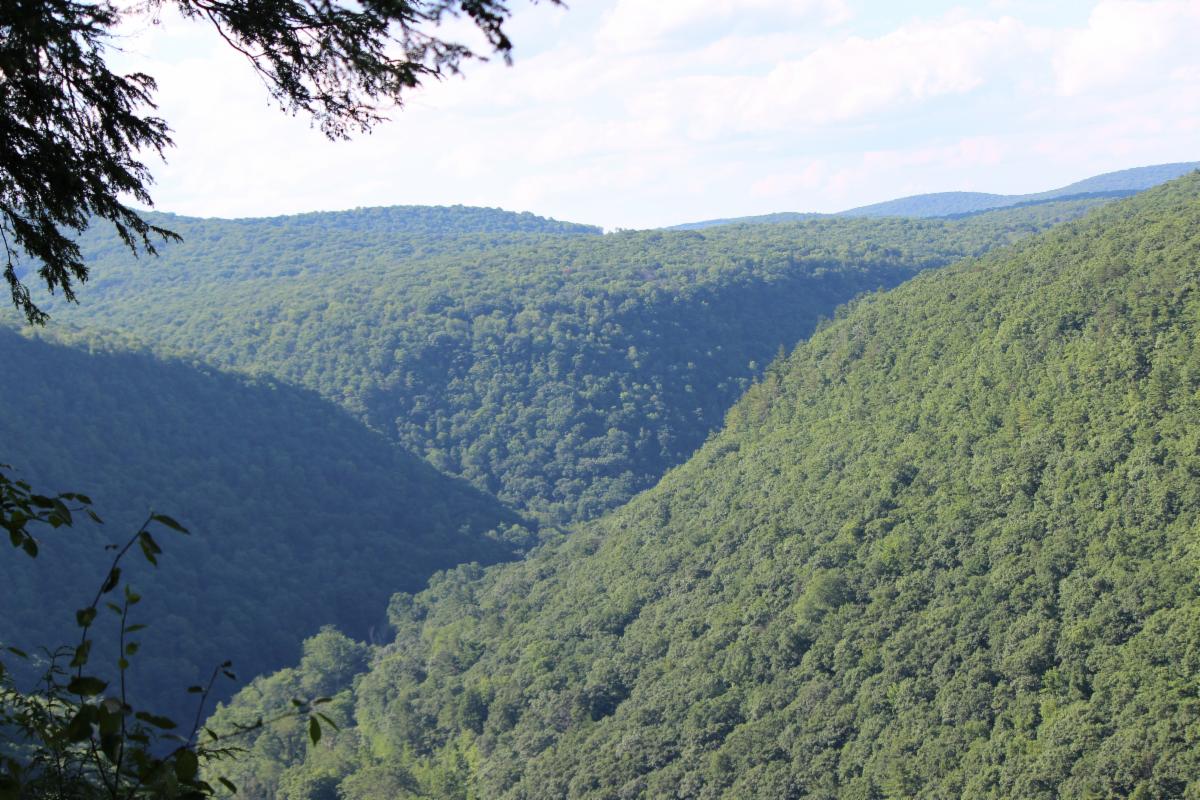
The short answer? Trees are critically important. If you live in the northeast, the land you live on was likely forested at one point, but probably hasn't been forested like this for quite some time. And as with all things, radical environmental changes can have unintended consequences later on. Understanding what those changes are, what their effects are today, and how all of it works together can go a long way to helping us make choices that will move us towards a better future.
America is home to an enormous variety of ecosystems, with incredible variation across the country in both wildlife and plant species. In New Jersey alone, between the shore, the coastal plains, tidal marshes and bays, the Pine Barrens, the highlands, and the Meadowlands, there's quite a bit of habitat variation even in a relatively small state. And most of those habitats can, on some level, be defined by their trees, or are set apart by their lack of trees. For example, the Meadowlands, a wetland which, based on the name alone, one might assume was a naturally treeless area, was in fact once home to a thriving population of Atlantic White Cedars (Chamaecyparis thyoides), the loss of which (cut down by Dutch settlers when New York was still New Amsterdam- it's been a while) drastically changed the nature of the area. The Pine Barrens, by contrast, retains quite a bit of its defining pine forest. Fallen pine needles have a naturally acidifying effect on soil, and so the sandy, characteristically acidic soil of the Pine Barrens makes it a unique natural area with a huge number of specialized plant species and a thriving variety of native wildlife (and also makes it suited to New Jersey's cranberry farming industry, based on varieties of the native American cranberry, Vaccinium macrocarpon.) Trees, or the lack thereof, change everything about a landscape, right down to the qualities of the soil. Here in the northeast, this is generally illustrated most clearly by looking at changes that have occurred in places where trees have been removed, but perhaps there's no better illustration of the sheer transformative power of trees than the fact that the Great Plains, obviously famous for their natural lack of trees, are in some places turning to forest, which is a huge problem for a naturally treeless landscape. Trees have an enormous impact on the landscape. So a forested landscape becoming treeless and a naturally open landscape becoming a forest are both massive changes for those landscapes on a fundamental level. Just because trees are hugely important, doesn't mean that every ecological habitat needs trees planted in it. Nuance, we meet again. But what exactly are the changes that tress confer on a landscape, anyway?
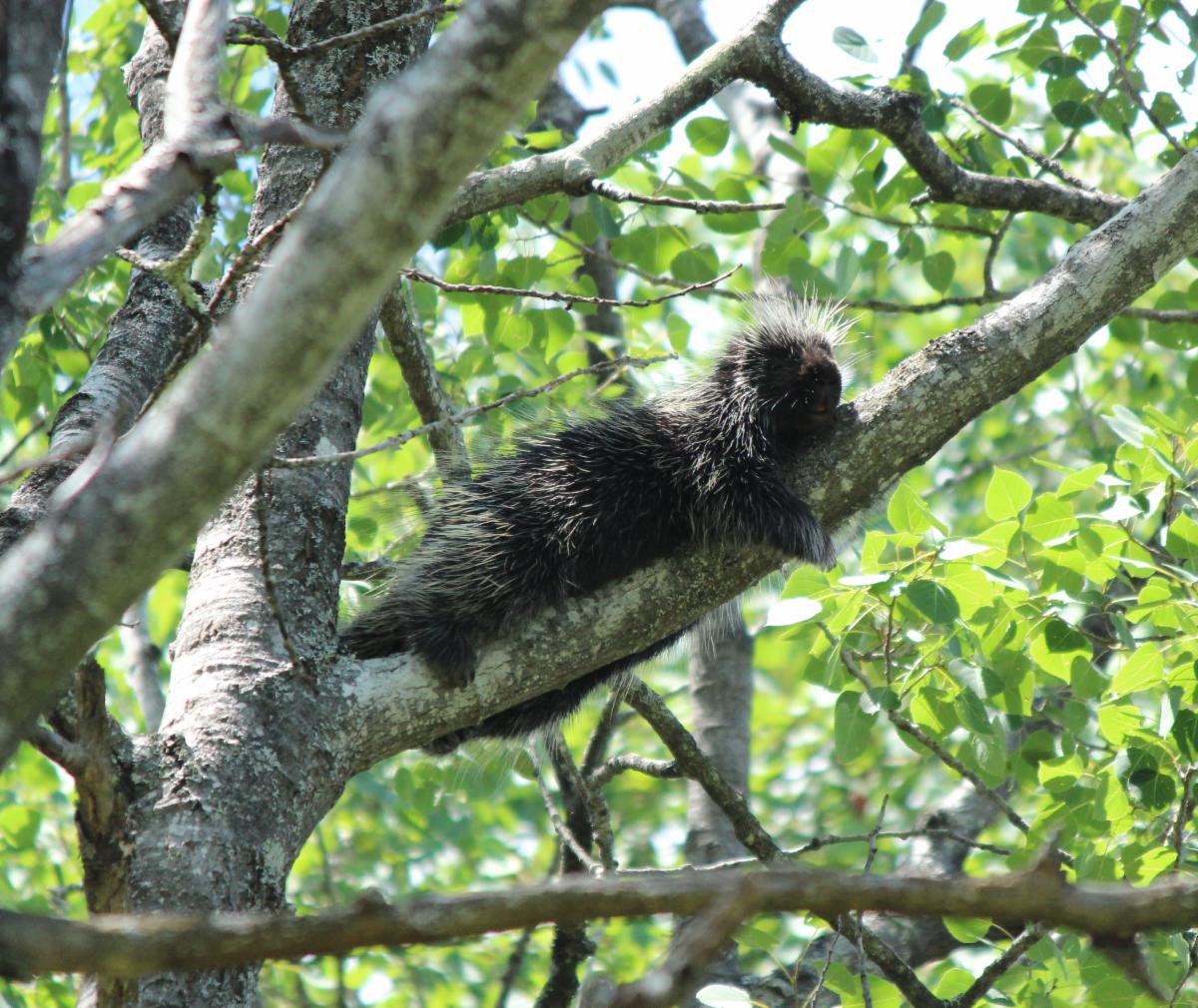
Well, first of all, they create habitat for all sorts of wildlife. After all, where else is a sleepy porcupine going to spend a hot day?
A Landscape With Layers
Imagine a hypothetical for a moment. Picture your kitchen: imagine its shelving, its cabinets, its drawers, and its counterspace. Now imagine removing all of the cabinets and shelves, but leaving everything you store on those shelves behind. Without the shelves, there just wouldn't be enough space to keep everything! So then imagine getting rid of everything you no longer had storage space for. That would look a bit less chaotic at least, but...then imagine trying to cook with so many of your supplies missing, or even just trying to find a plate to eat off of. It turns out you need all that vertical storage and the things that live on it to have a functional kitchen. Remove all the trees from a forest and replace it with vast swaths of lawns and mulch beds, and you've accomplished something very similar. There's no place for the birds to build their nests, and even if they do find someplace to nest, what are they and their young supposed to eat, if there aren't any host plants for insects to grow on? No one's getting any cooking done in this kitchen: the environment's cupboards are quite literally bare. In fact, the cupboards themselves are missing entirely.
Part of what trees do for a forest landscape is to give it depth. One tree alone can provide several lawn's worth of surface area- and unlike a lawn, it's space that wildlife can actually use. Butterflies use trees for shelter during bad weather, caterpillars use them for food, birds spend almost all of their time in them, and that's only the tip of the iceberg. Many trees produce fruits or nuts, which feed small native mammals like squirrels and chipmunks (and larger ones like bears and deer, as well). And they provide more than just food for adult animals: much of our native wildlife relies on trees to reproduce.
Nature's Nursery, Nature's Pantry
Cavity-nesting birds like chickadees and titmice use tree trunks to nest in, while canopy-nesting birds like robins, catbirds, hummingbirds, and baltimore orioles use branches. Trees are often some of the first plants to bloom in the spring, making them essential to early-emerging pollinators, and many of the spectacular butterflies we all try to coax into our pollinator gardens require trees to reproduce.
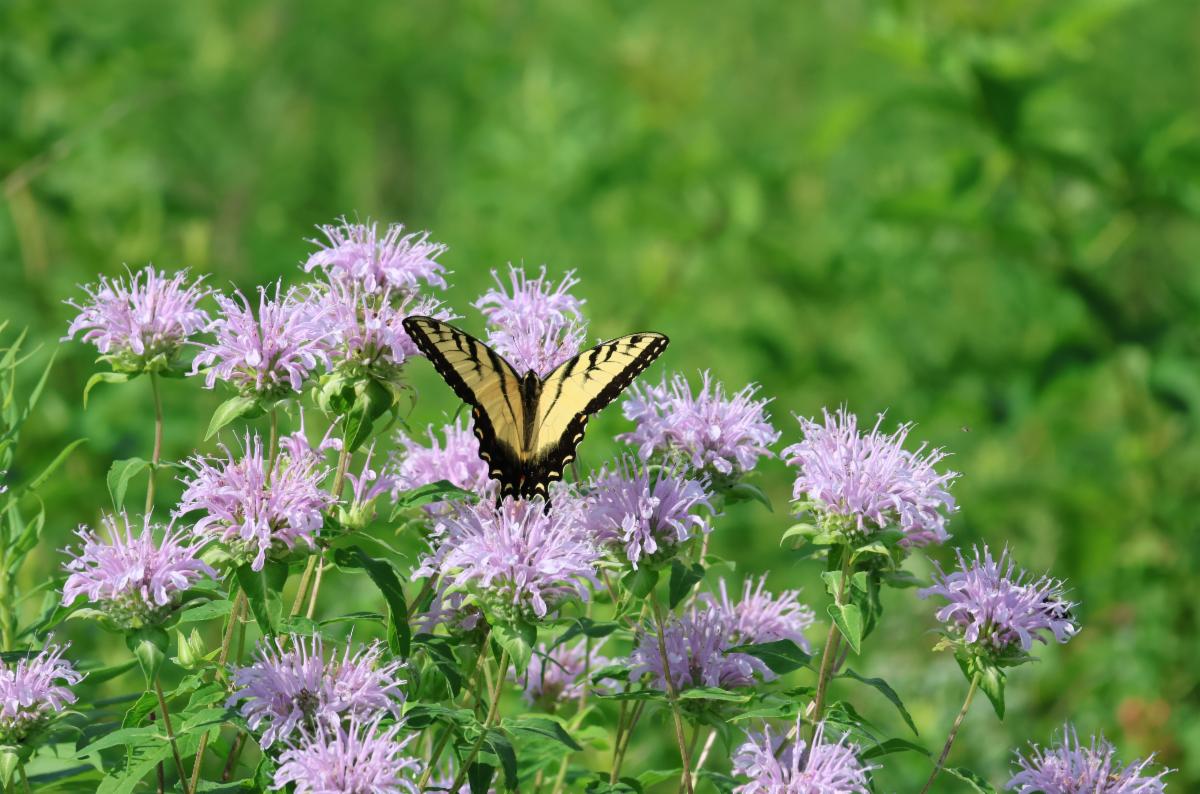
Eastern Tiger Swallowtail butterfly caterpillars (Papilio glaucus) use trees like Wild Black Cherry (Prunus serotina) and Tulip Poplar (Liriodendron tulipifera) as host plants, but they're far from the only ones. Mourning Cloak butterfly caterpillars (Nymphalis antiopa) feed on willow trees (Salix spp.), and Red-Spotted Purple butterfly caterpillars (Limenitis arthemis) can use Wild Black Cherry or willows. If I listed all of the native butterflies and moths that feed on trees, we'd be here all day, but if you want to see something truly wild, look up the gorgeous Regal Moth (Citheronia regalis), which reproduces on Black Walnut (Juglans nigra) and Hickory (Carya spp.) trees, and whose completely harmless caterpillars, known as Hickory Horned Devils, look like something dreamed up by Tim Burton. It's a solid defense against birds, given that Regal Moth caterpillars are large and delicious to predators, and their only defense is nature's equivalent of a rubber sword prop and a scary Halloween mask.
The list of ways trees support wildlife native to a forested area is quite literally endless, because trees are the foundation of the environment itself in these areas. They're the architecture and the food and the thing that maintains the soil conditions that native plants to the area need. Birds use twigs from trees to build nests, chipmunks use fallen leaves to line their own nests, and bumblebees raise their young under leaf duff. Did you know we get flying squirrels in New Jersey? Because we do- but only where there are trees to be found for them to nest in. Native bats like little brown bats are famous for getting into peoples' attics, but did you know that in nature they generally raise their pups in tree cavities? There are actually nine bat species native to New Jersey, one of which is federally endangered and two of which are threatened, and most of them spend the summer roosting in trees, or under loose bark. And fallen leaves? They naturally mulch the land -- preserving moisture, combating erosion, building and fertilizing the soil, all the while providing habitat for fireflies, salamanders, turtles, and certain life stages of butterflies and moths.
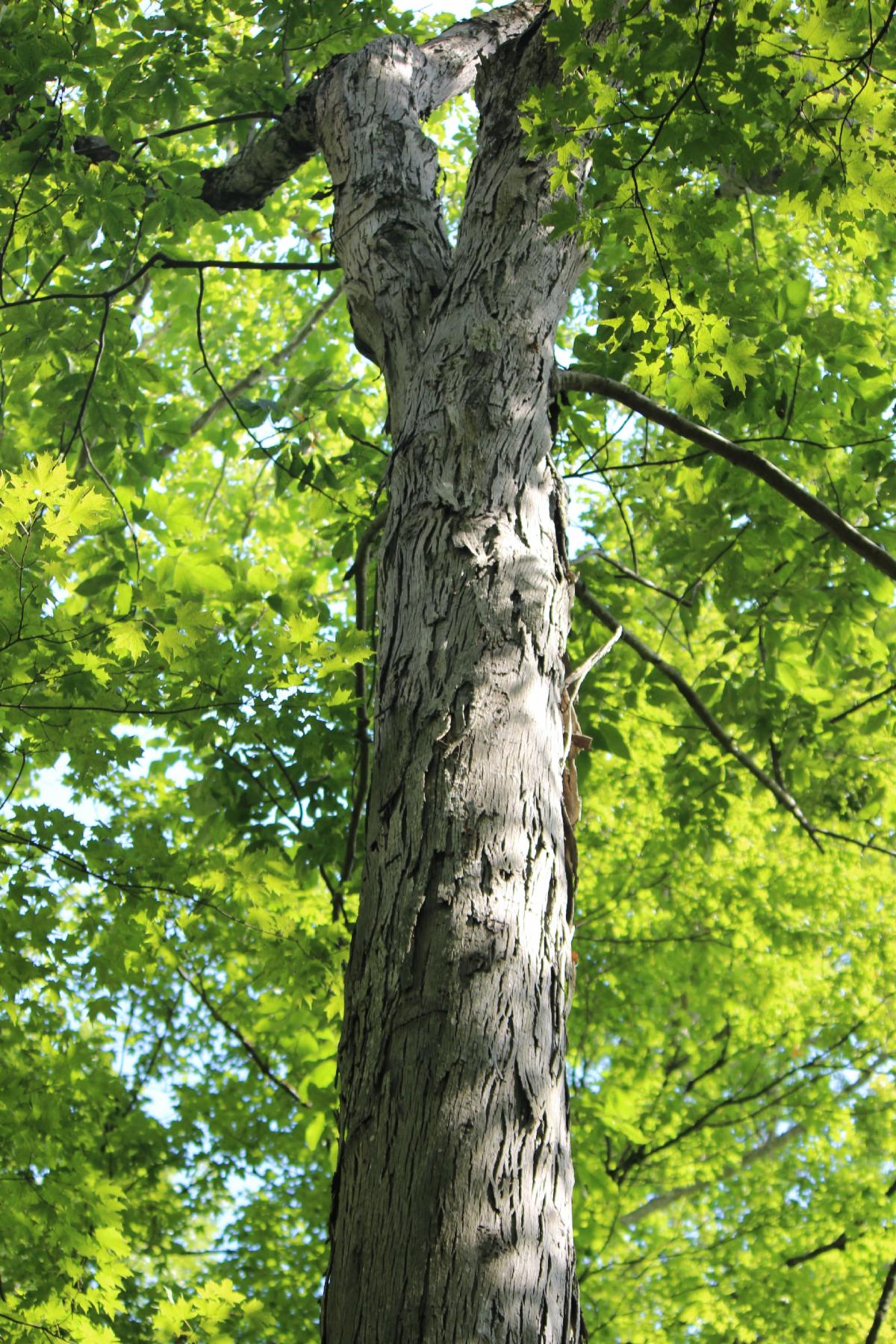
Ever seen a bat house design? Does the bark of Shagbark Hickory (Carya ovata) maybe remind you of it a bit? That's not a coincidence.
Being native plant gardeners, it's easy to get caught in a cycle of planting garden flowers for pollinators and insects and birds, and that's certainly nothing to sneeze at! But where trees specifically are concerned, you can broaden your scope to support far more creatures than even the most ambitious treeless garden design. Trees are big and create habitat: they support generalist insects, specialist insects, birds, amphibians, and mammals all at the same time. If a goldenrod grew to be seventy-five feet tall, it would likely do the same, but as far as a single plant creating a large amount of habitat and food for a vast array of species goes? Trees are difficult to beat.
For The Love Of Shade
Of course, planting a tree doesn't just create habitat in its bark and its branches, it also creates plant habitat underneath. Many of our native plant species grow most happily with some shade, and given that much of the northeast was once dominated by forest, that's hardly a surprise. Wild Geraniums (Geranium maculatum), Wood Poppies (Stylophorum diphyllym), Jack-in-the-Pulpits (Arisaema triphyllum), and many, many others are primarily woodland species. Some of these plants are well-known, some obscure, and some are incredibly rare. Bringing trees back to a once-forested area not only creates habitat in the branches but also creates a shaded space at ground level in which many of our most beautiful native wildflowers can grow. And they're not the only ones that benefit from shade! Shade trees planted near a house lower the indoor temperature quite a bit, saving lots of energy on air conditioning during the summer (this isn't just about energy bills either, but about sustainability). In fact, they generally cool an entire area, providing both people and animals a respite from the summertime heat of global warming. Ever wonder why it feels so much hotter in cities? It's because it is, and that's a big, lethal problem. It's not just the shade trees provide, it's the way they block paved areas and rooftops from absorbing heat from the sun. And that's not even getting into carbon sequestration, where trees directly combat global warming. As it turns out, we need trees, and not in an abstract way. But the planting of trees benefits far more than just ourselves.
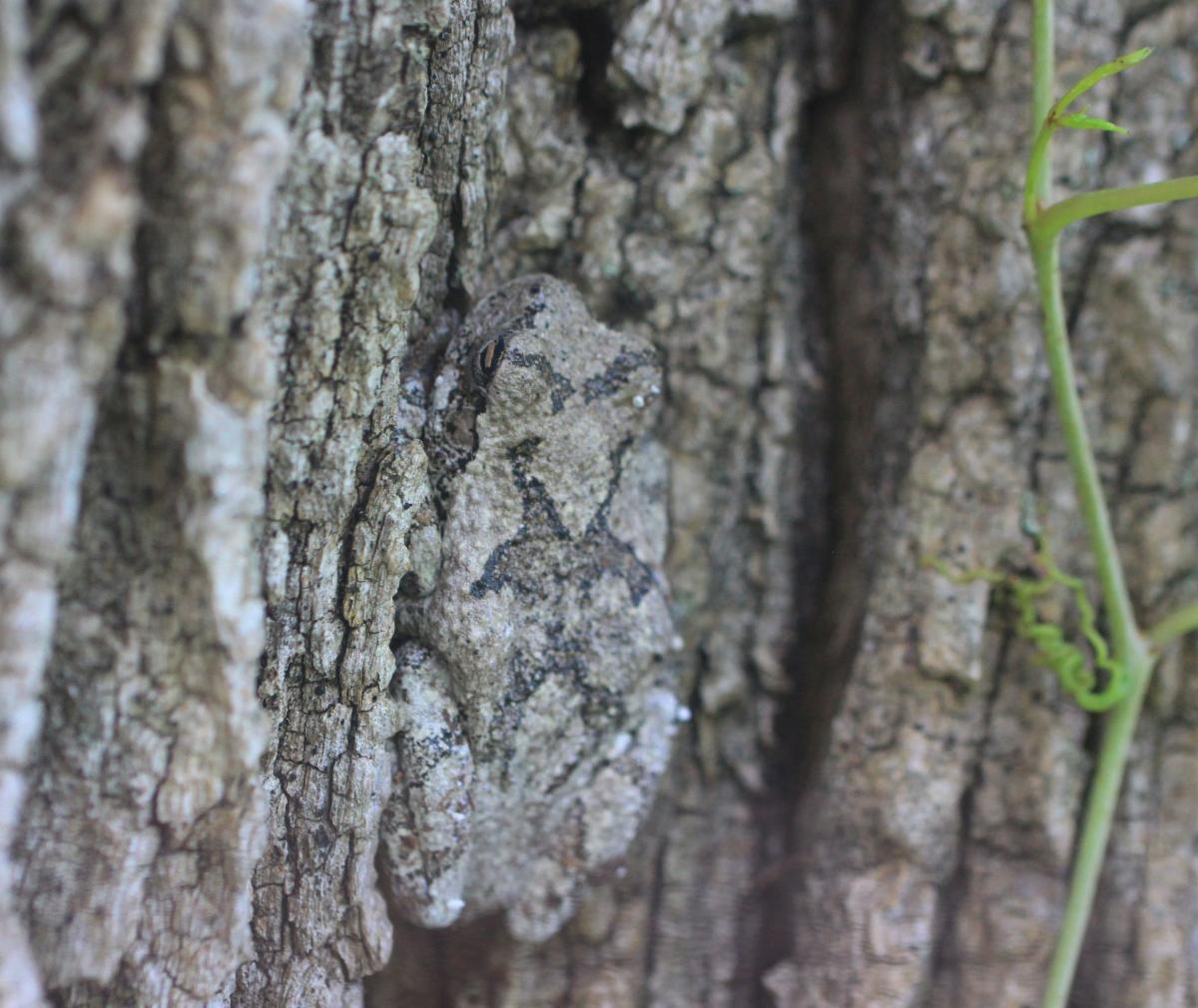
On today's game of: Can You Spot The Frog? Grey Treefrogs (Hyla versicolor) like this one lay their eggs in shallow water, but when they grow to adulthood they stick to the trees. Literally!
How To Add Trees To A Landscape
Trees aren't as intimidating to grow as many people think. Do you suppose a maple overthinks things as it's releasing its seeds into the wind, or that an oak tree only trusts the most reliable squirrels to bury its acorns in the most ideal of locations? The truth is, trees will grow anywhere they can get a foothold, provided their needs are met. And a tree's needs aren't that different from any other plant's needs. They can be tricky to get established, which is why an individual tree sets so many seeds, but with you there to help it along, a very young tree has far better odds of surviving to become a large, healthy shade tree.
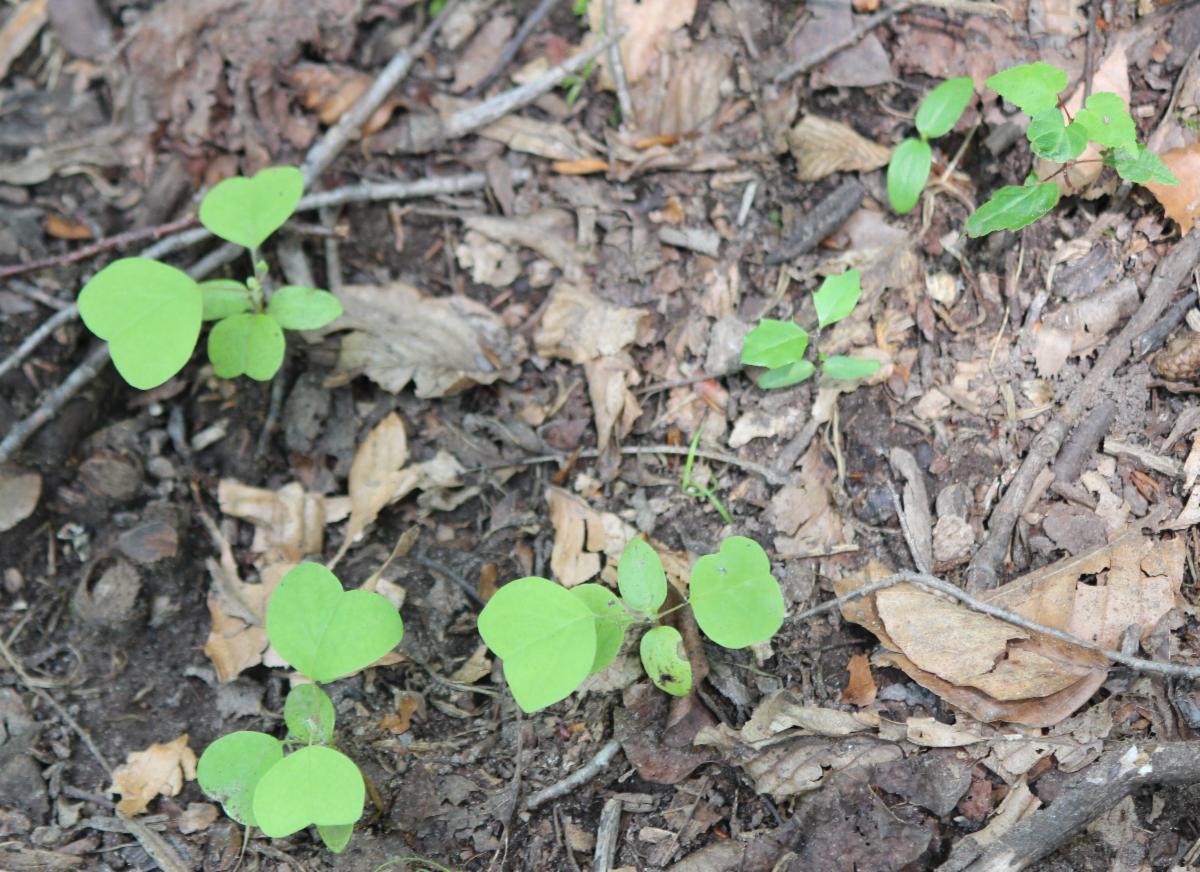
This is a picture of a perfectly healthy forest floor. Almost all of these seedlings are trees, but few (if any) of them are destined to make it to adulthood. If you're curious, the seedlings on the left are Tulip Poplars (Liriodendron tulipifera), the pointy one in the middle is an American Holly (Ilex opaca) and the ones in the upper corner are some sort of maple (Acer sp.). Any one of these seedlings could absolutely make it to adulthood if given the resources they needed, but competition is tough on a forest floor, so trees often hedge their bets (pardon the pun) by producing a large number of seeds. Some trees, like oaks, specifically produce a huge number of seeds only some years (called mast years) which helps to decrease the odds of their entire seed set being eaten by hungry squirrels, turkeys, bears, deer, bluejays and the vast array of wildlife that eagerly consume acorns.
We've talked about this before, but there are a number of advantages to planting a tree when it's still small. This isn't just true for oaks; most trees benefit significantly from being allowed to spread their roots from a young age. And most trees are more prone to health problems later in life if they're rudely uprooted and relocated when they've been growing in the same place for years. If you want a large tree on your property, you're far, far better off planting it yourself when it's still young (we're talking less than 3 feet tall: or better still, plant it as a seed) than hiring someone to install an expensive 6-12 foot tall tree. People tend to worry about large trees growing near their house, and given the rate of extreme weather events we get these days, it's an understandable concern- but a healthy tree will be far better suited to weathering extreme conditions than a tree that suffered root damage when it was bought and installed when it was seven years old. Better yet, several trees who have grown up together will have interlocking roots - there is strength in numbers (even in a microforest). This is true essentially across the board. So the biggest concern when planting a tree on your property should actually be, what kind of tree should I plant? There are two ways to answer that question. The first way: look around. What kind of native trees are already growing in forested areas nearby?
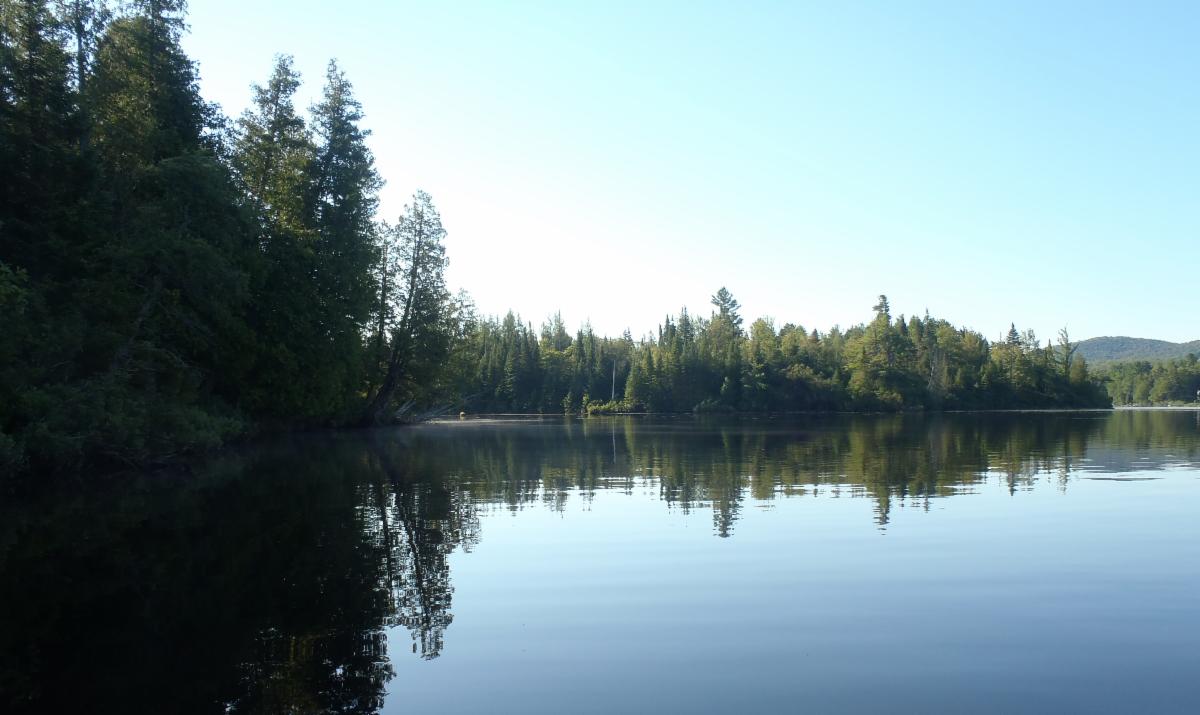
Different habitats tend to support different kinds of trees, and it's worth knowing what kind of habitat you're naturally in. For example if you live in a place that's primarily full of evergreens, aspens, and birches, planting a palm tree would be a bad choice. That's an extreme example, but in a more general way, those are the kinds of considerations you should keep in mind when trying to introduce trees to your property: what should be growing there?
Just looking around your neighborhood may give you a bit of a mistaken impression about what trees should be there, so you may have to do slightly more vigorous research. Trees that are popular with landscapers (especially historically) are not always trees you want to introduce into a landscape, and are often quite invasive (Mimosa Albizia julibrissin, Callery Pear Pyrus calleryana, and Norway Maple Acer platanoides, to name a few). Even reasonably harmless species may have hidden drawbacks and lack many of the benefits of native trees (looking at you here, Norway Spruce Picea abies). But observing the species that can be found in your area is a good way to choose what trees to plant (and may even provide you a local seed source to get started with).
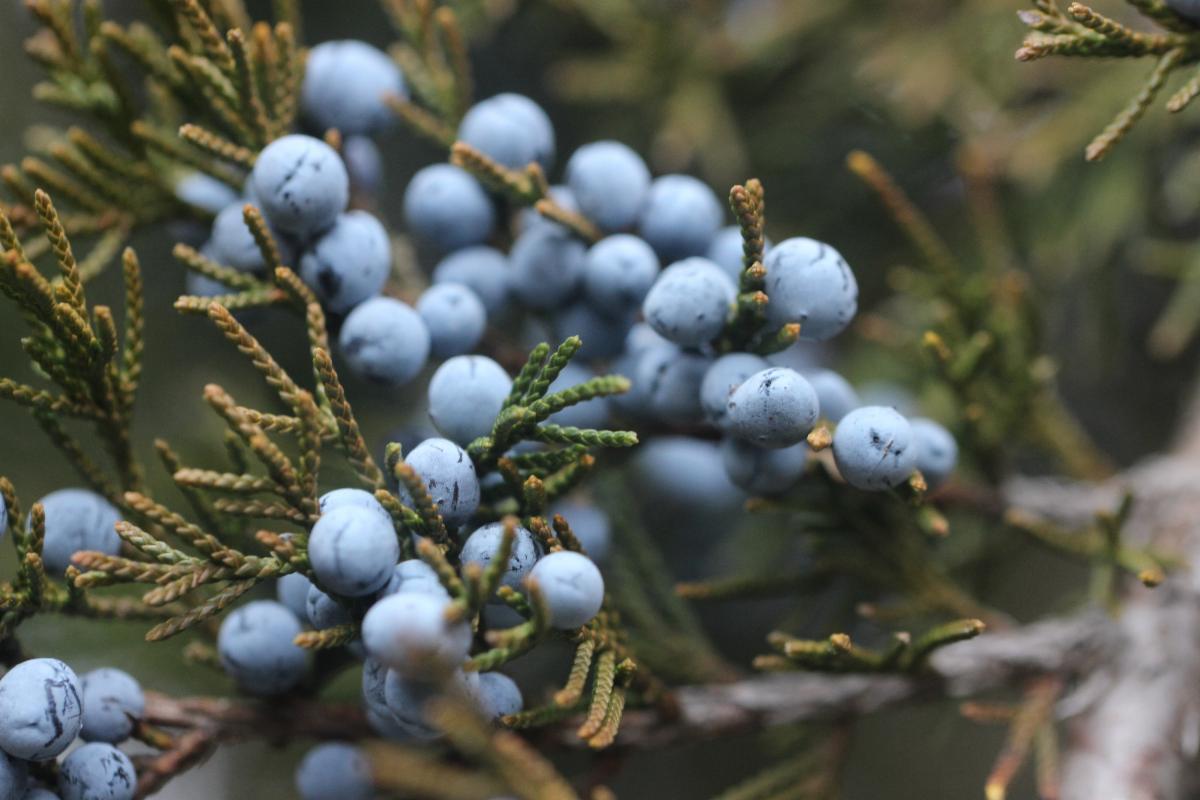
Most things may not grow on trees, but tree seeds do. Eastern Redcedar's (Juniperus virginiana) berry-like cones like these are very popular with Cedar Waxwings - in fact they are an incredibly important winter food source for them (as well as a large number of other winter resident birds).
The other way to choose what tree to plant is the one most people go with, which is: what are you looking for in a tree? If you want flowers, there are plenty of native flowering trees, like Yellow Buckeyes (Aesculus flava) and Catalpas (Catalpa speciosa). If you want a small tree that still flowers, you could go with a Flowering Dogwood (Cornus florida) or a Redbud (Cercis canadensis). If you want a tree that both flowers and bears fruit, you can plant a Wild Black Cherry (Prunus serotina) or an American Plum (Prunus americana) or a White Fringetree (Chionanthus virginicus). If you want a large, long-lived shade tree, maples (Acer sp.) and oaks (Quercus sp.) and Sourgums (Nyssa sylvatica) are your friends. If you want a big tree fast, you could plant a Tulip Poplar (Liriodendron tulipifera). If you have acid soil, pine trees (Pinus sp.) or hollies (Ilex sp.) are a good option. If you live along a riverside, a willow (Salix sp.) or a sycamore (Platanus occidentalis) or an ironwood (Carpinus caroliniana), which is slightly smaller, might be a good choice. If you want a specimen yard tree and don't live where it gets too hot, birches (Betula sp.) are an excellent choice. If you want a tree that will draw birds and pollinators to your yard, Staghorn Sumac (Rhus typhina) and American Hackberry (Celtis occidentalis) are both ideal. But as you may have noticed from this list, where you live never becomes irrelevant. Many of these trees can grow in a variety of conditions, and none of them do just one thing; trees are not one-trick-ponies, and more research into the species you're planting is always better. But at the end of the day, whatever tree you plant has to be able to get the foothold it needs in your yard. If you want it to grow there, you have to pick a tree that will grow in conditions that match what you have.
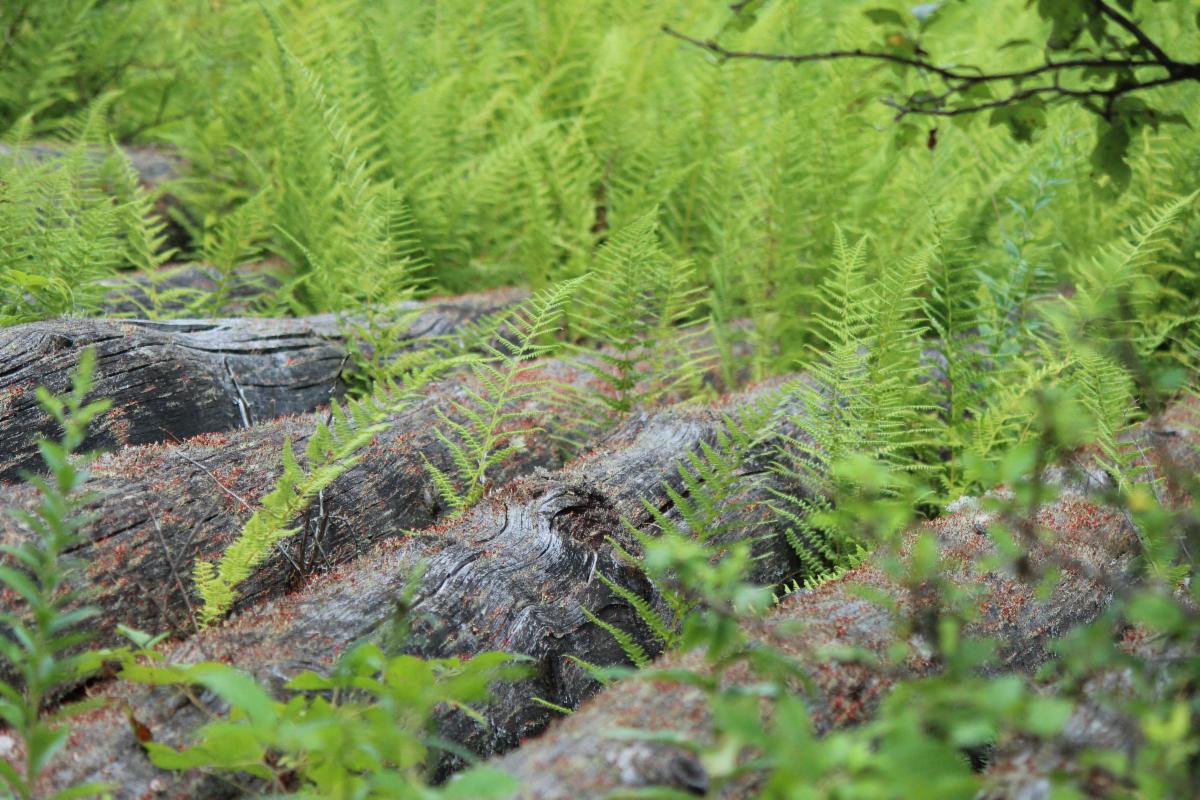
Even when trees die they create habitat. "Nurse Logs" help retain moisture and add nutrients to the soil as they break down, creating an ideal habitat for new seedlings to grow. They're also fantastic habitat for salamanders and many types of native insects.
Restocking Nature's Kitchen, and Turning on the AC
Ultimately, growing trees in previously forested areas comes down to choices. And the easiest choice to make, always, is inaction. It's the easiest thing in the world to do nothing (this applies to much more than just planting trees), or to find reasons not to act. Maybe you hate picking sticks up off your lawn before mowing, or you're worried about how shade might effect your grass. It ultimately comes down to priorities. If you believe it's important to plant trees, you'll find a way to do it! And if more of us learn just how important trees are, more of us will make it a priority. For the wildlife, plants, and hundreds of insect species that rely on those trees, that can only be a good thing! Every tree growing in its native range helps, and every tree planted makes a difference. The nice thing about planting trees is that you can see this happen yourself: walk under a shade tree in your yard, and you can feel that it's cooler. You can watch your electricity bill go down as trees protect your house from the sun's heat. You can see butterflies whose caterpillars have grown up in its canopy, and you can hear the cicadas and katydids and baby birds that will come to call your tree home. It's rare that you can make such a tangible difference in your own life and the lives of the people and wildlife around you with so little work, and rarer still that you get to watch it happen.
So go plant a tree. Our native species, the climate, and your future self will all thank you.
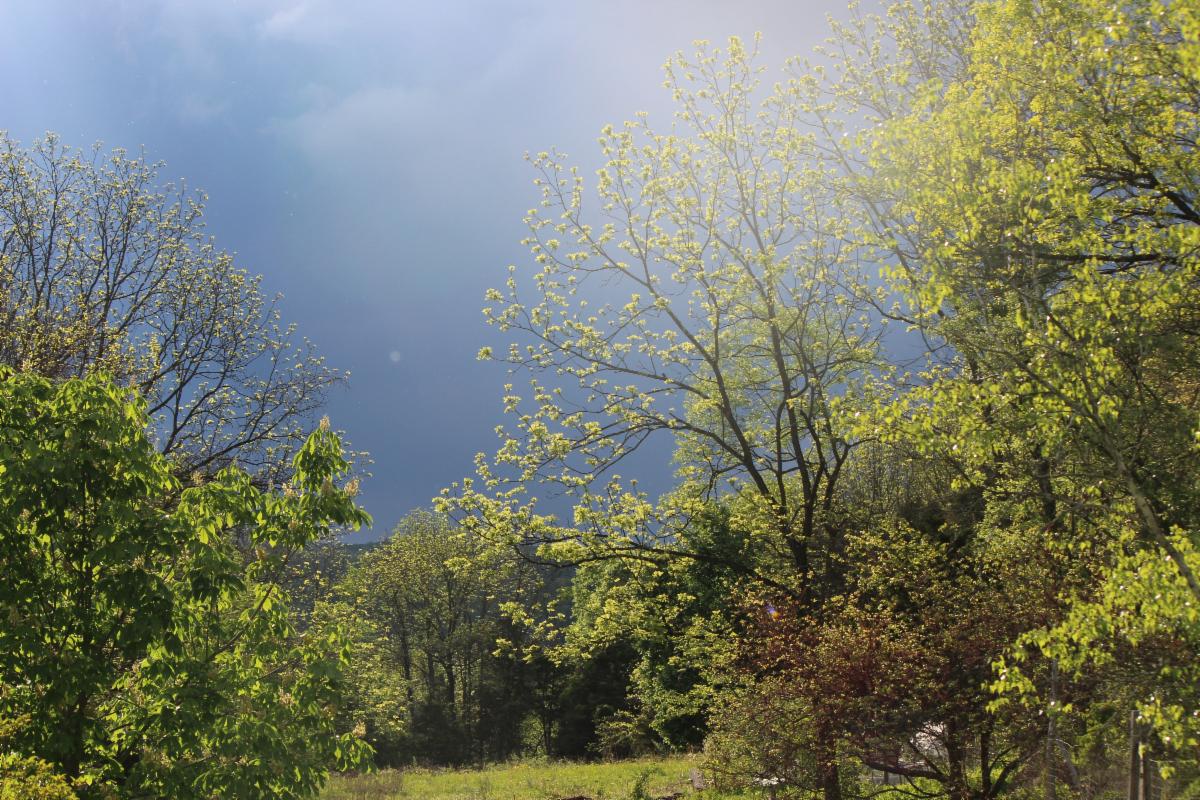
And, on a personal note, watching the trees leaf out has always been my very favorite part of spring.
